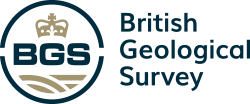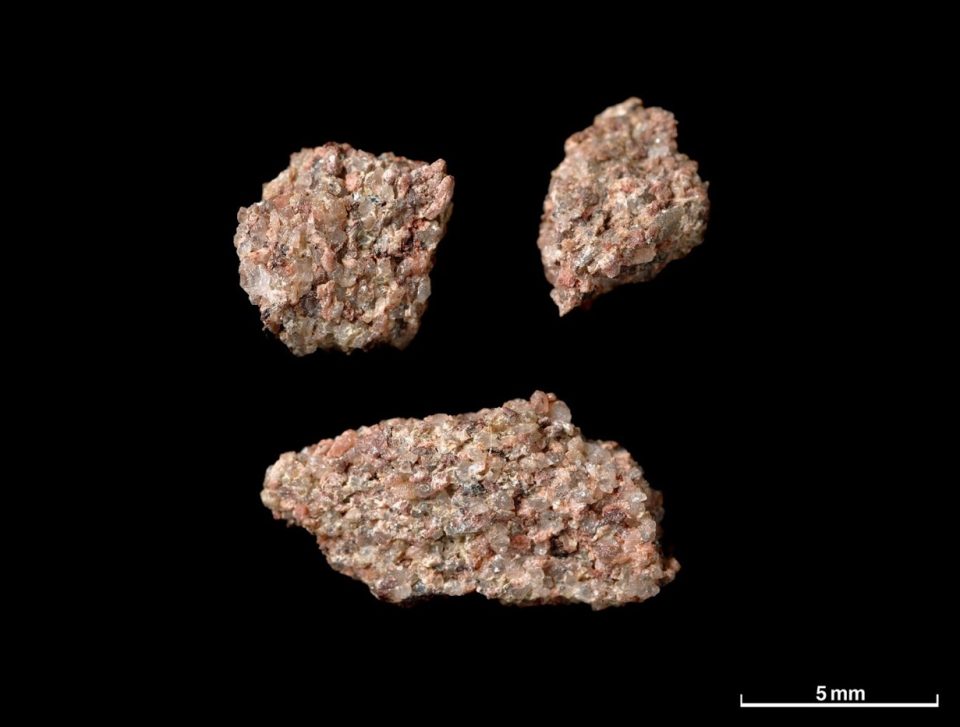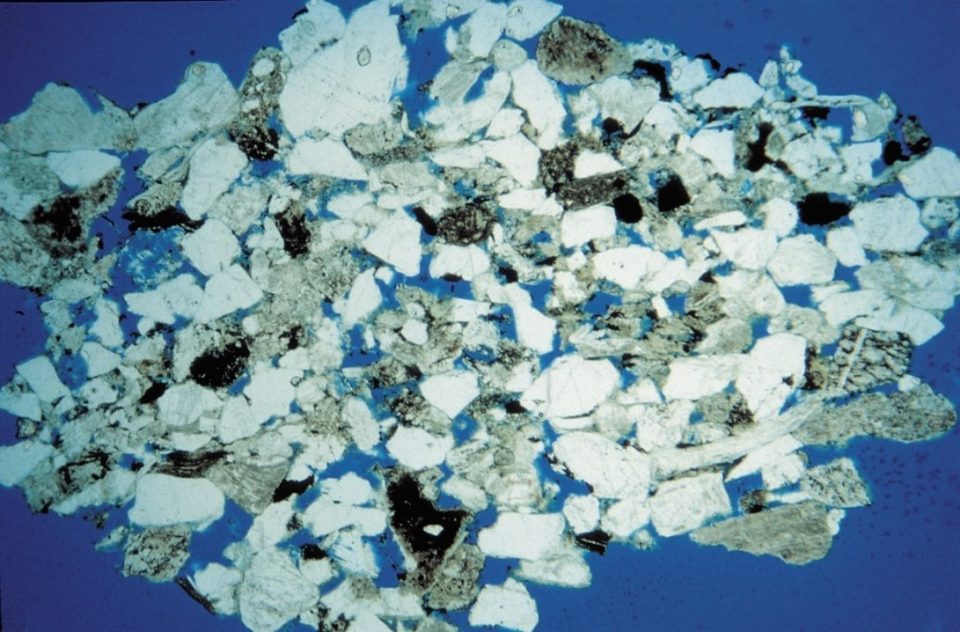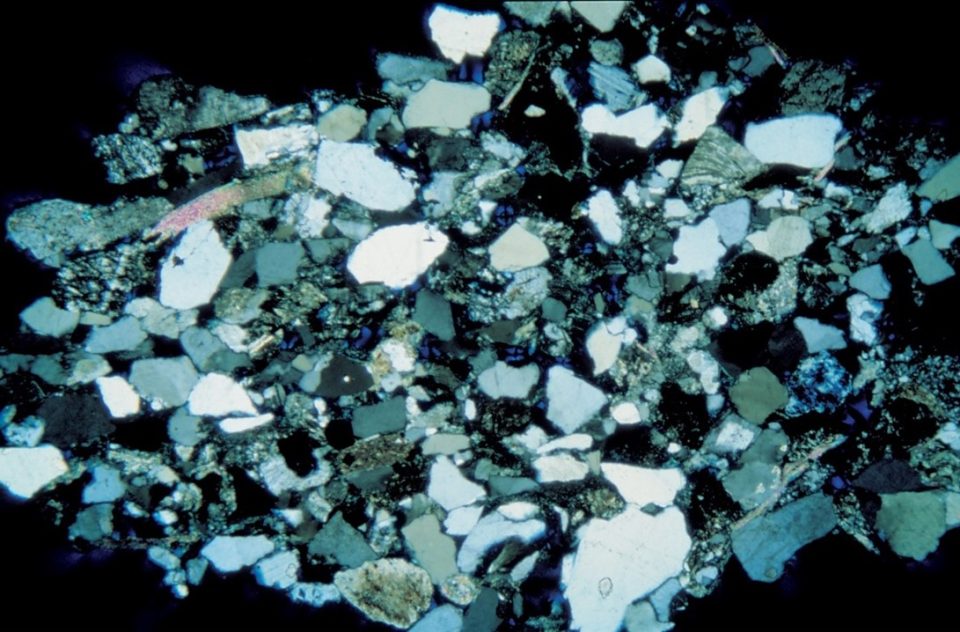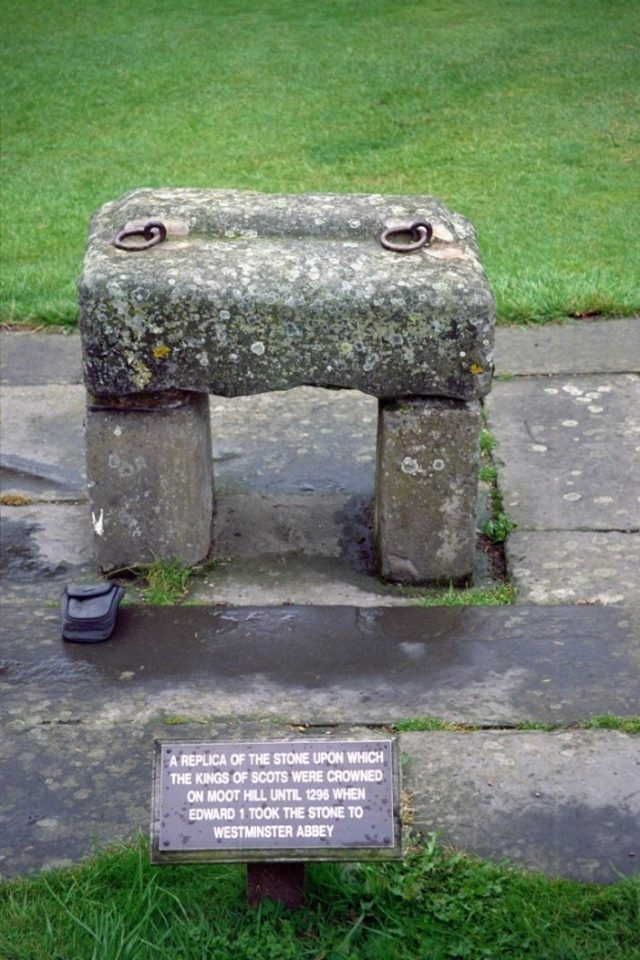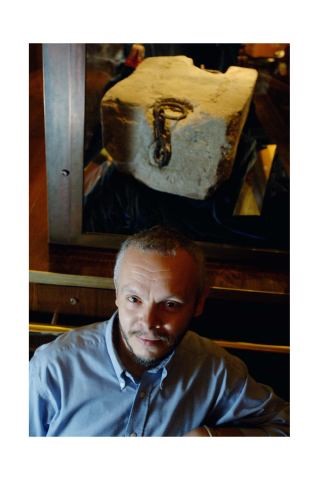The Stone of Destiny
The origins of the Stone of Scone: where it came from, why BGS has crumbs of it in its collections and the little-known fact that it is upside down.
03/05/2023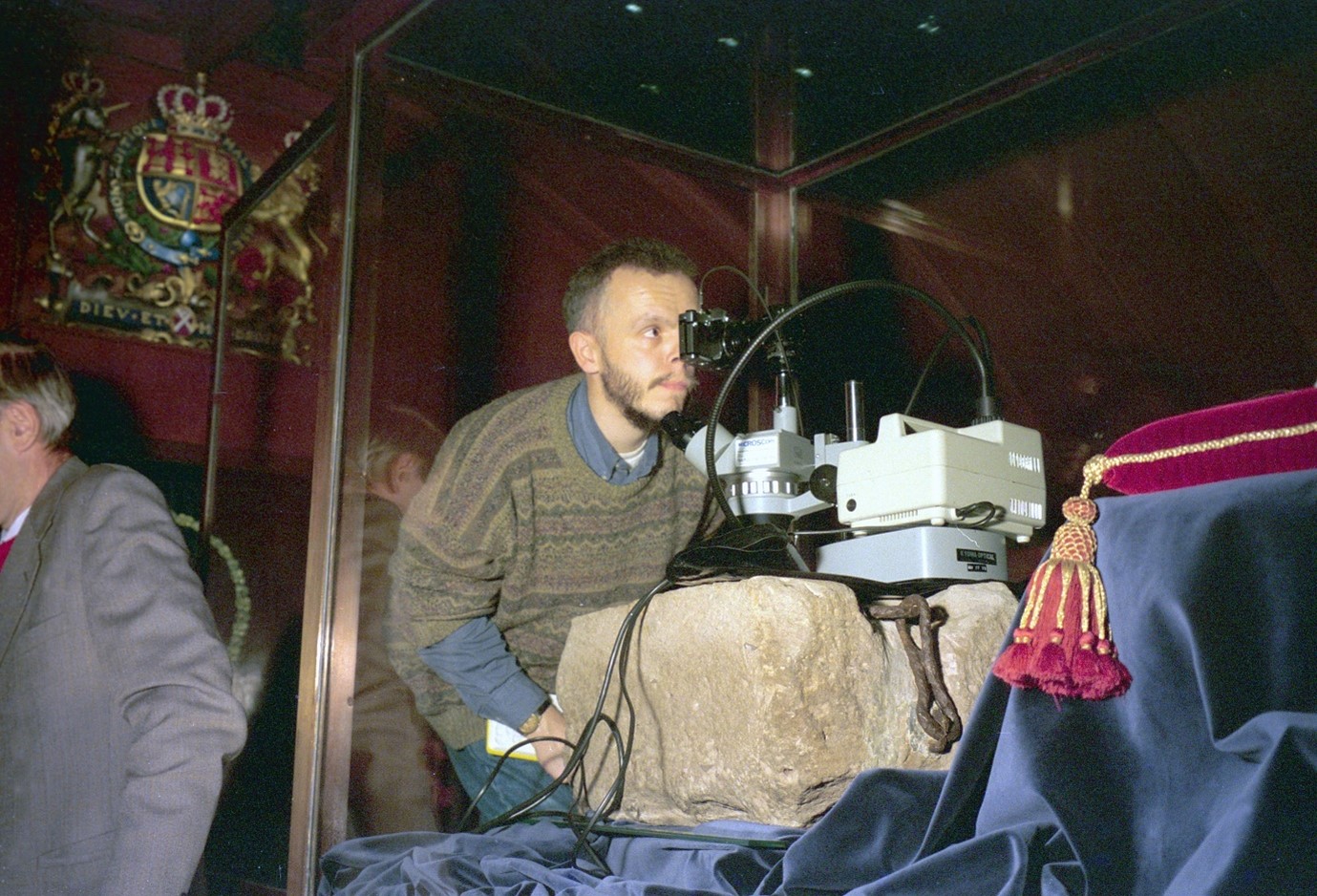
History of the stone
The Stone of Scone (pronounced ‘skoon’), also known as the Stone of Destiny or, in England, the Coronation Stone, is a slab of sandstone upon which the monarchs of Scotland have been crowned since medieval times. Stories about its origin are shrouded in mystery; one says it is the Biblical Jacob’s Pillow; another has it being used by ancient tribes of Scots in County Antrim before being brought to Scotland and still another states it originally came from the Roman Antonine Wall.
What is known is that it was used as a crowning-seat for Scottish monarchs at Scone Palace in Perthshire between the 9th and 13th centuries, until it was stolen in 1296 by King Edward I of England, the ‘Hammer of the Scots’. He took the stone to Westminster in London and had it mounted in a wooden throne; since then, English monarchs would be crowned above the stone as a symbol of the dominion they claimed to have over Scotland. It was not returned to its homeland until 1996, where it now resides in Edinburgh Castle.
The Stone of Scone at BGS
The stories and myths around the Stone of Scone are well known, but what is less well known is that fact that BGS has a sample of it as part of its Scottish collections. According to BGS’s records, the sample was collected in the late 19th century by either Sir A C Ramsay or Sir J J H Teall, both of whom later became directors of the Geological Survey of Great Britain (now the British Geological Survey).
The entry in BGS’s collections register corresponds to this sample and an additional six microscope slides, labelled S17850 to S17855, and refers to them rather irreverently as ‘crumbs from the Stone of Scone’. The entry for sample S17855 states that it was added to the collection by Teall, with the clear implication that this applies to the other thin sections and the rock chips. These microscope slides may, collectively, be samples collected by Ramsay in 1865 and were later registered by Teall as part of BGS’s Scottish collection. Ramsay examined the stone in Westminster Abbey and described how he took a sample by sweeping its lower surface with a soft brush, detaching as many grains ‘as would cover a sixpence’.
The grain mount thin sections made from Ramsay’s samples were later examined by another BGS geologist, C F Davidson, in 1937. Davidson stated that the ‘microscopic preparations’ were obtained in 1892. It is possible that he confused the year in which the samples were registered (possibly 1892) with that in which they were originally collected (1865). The additional loose rock chips may have been collected separately, perhaps in 1892 by Teall, and given the same sample number as one of the original microscope slides.
The samples held by BGS are of a pale-pink sandstone that is lithologically similar to the Stone of Scone. Detailed analysis of the microscope slides in 1998 and the actual stone on its return to Scotland confirmed that it resembles the Lower Devonian sandstones from the Perth area. In particular, the texture, mineral assemblage and colour are similar to the Devonian sandstones of the Scone Sandstone Formation that are exposed in the vicinity of Quarry Mill, near Scone Palace.
Is this the real Stone of Scone?
There has always been a question as to whether the stone now used in the coronation ceremony is the original, ‘real’ Stone of Scone. It was rumoured that the monks who guarded the stone at Scone Palace gave the English king a fake and that this is the stone that now sits in Edinburgh Castle. The stone was also stolen from Westminster Abbey in 1950 by a group of Scottish students, who hid it until 1951 when they handed themselves in and revealed the stone’s location. Rumours abounded again that they had returned a fake and that the real stone remains hidden away, adding another chapter to the stone’s mysterious history.
Is the Stone of Destiny upside down?
Examination of the Stone of Scone reveals that it is a single bed of cross-laminated sandstone. The cross-lamination was formed by sand waves moving across the bed of an ancient Devonian river that once flowed across central Scotland. The curved shapes of the sedimentary structures shows that the smooth, upper surface of the stone was the original base of the sandstone bed and the ‘base’ of the stone, which has been left uneven and unworked, is the irregular top of the sandstone bed. Geologically speaking, the Stone of Destiny is indeed ‘upside down’, possibly because the base of the sandstone bed was smoother and much easier for the original stone mason to work to provide the required flat surface.
The coronation of King Charles III
In May 2023 the Stone of Scone will once again travel south to Westminster, where it will be installed in the coronation chair that King Charles III will sit in when he is crowned in Westminster Abbey. After this it will return to Scotland once more to await the coronation of the next monarch of the United Kingdom.
About the authors
Welander, R, Breeze, D J, and Clancy, T O (editors). 2003. The Stone of Destiny: artefact and icon. Society of Antiquaries of Scotland Monograph Series, No. 22. (Edinburgh, UK: Society of Antiquaries of Scotland.) ISBN: 978-0903903226

BGS scientists join international expedition off the coast of New England
20/05/2025
Latest IODP research project investigates freshened water under the ocean floor.
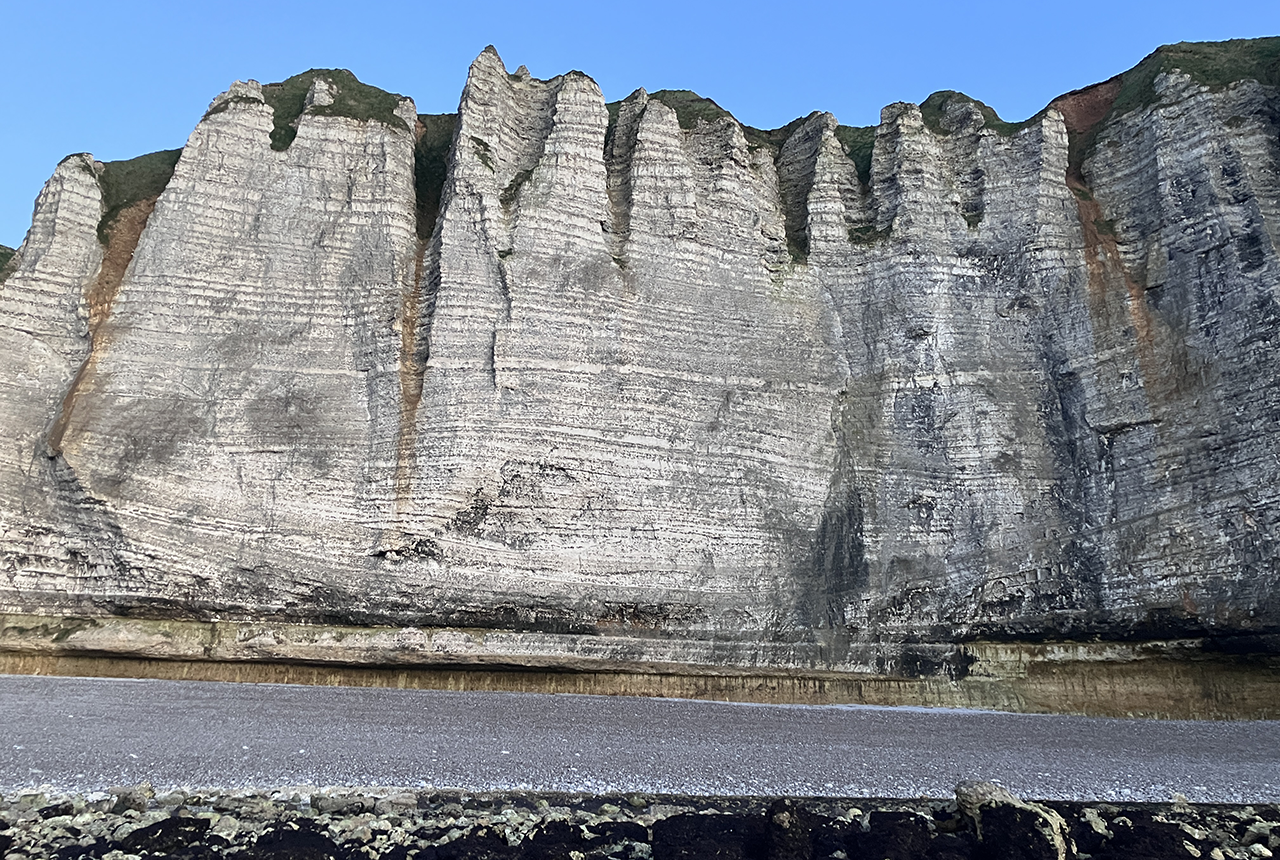
Geology sans frontières
24/04/2025
Geology doesn’t stop at international borders, so BGS is working with neighbouring geological surveys and research institutes to solve common problems with the geology they share.
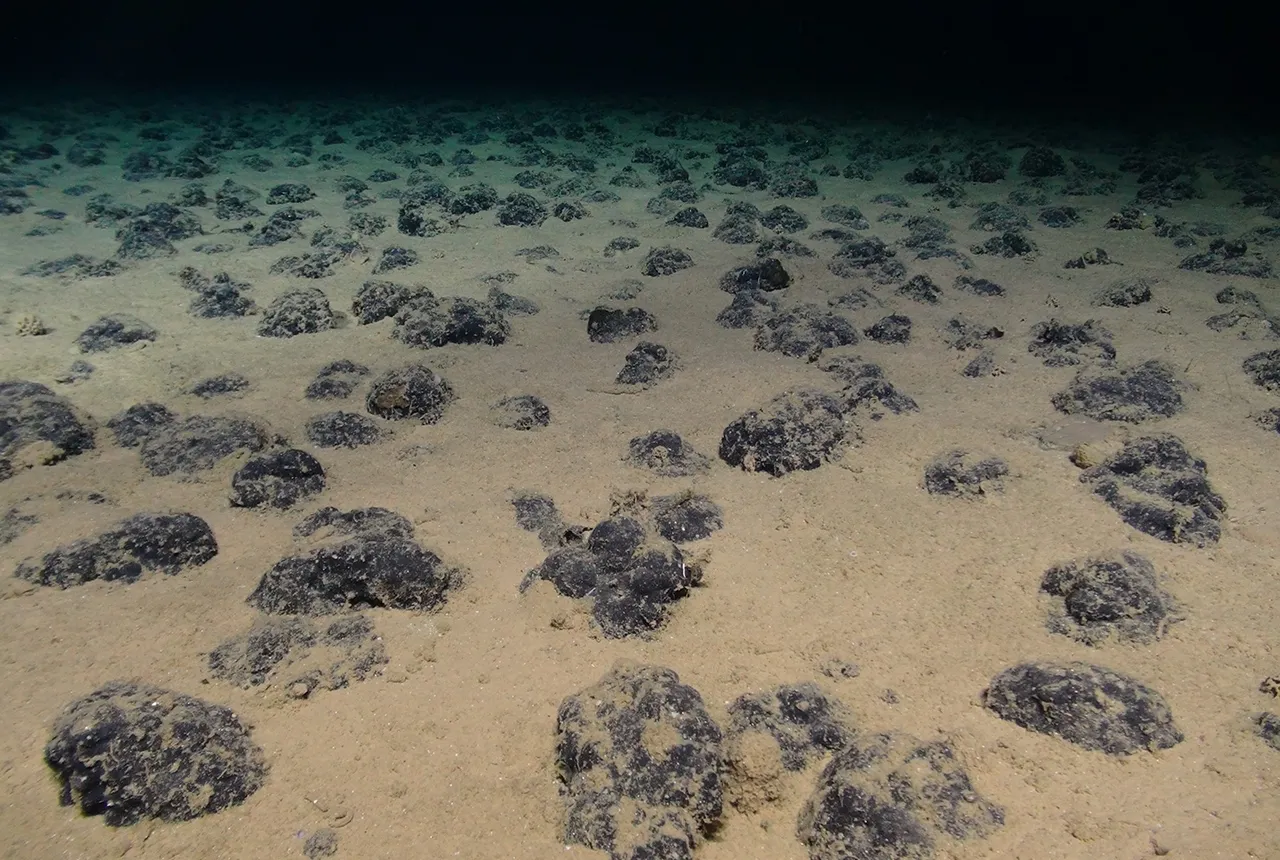
New study reveals long-term effects of deep-sea mining and first signs of biological recovery
27/03/2025
BGS geologists were involved in new study revealing the long-term effects of seabed mining tracks, 44 years after deep-sea trials in the Pacific Ocean.
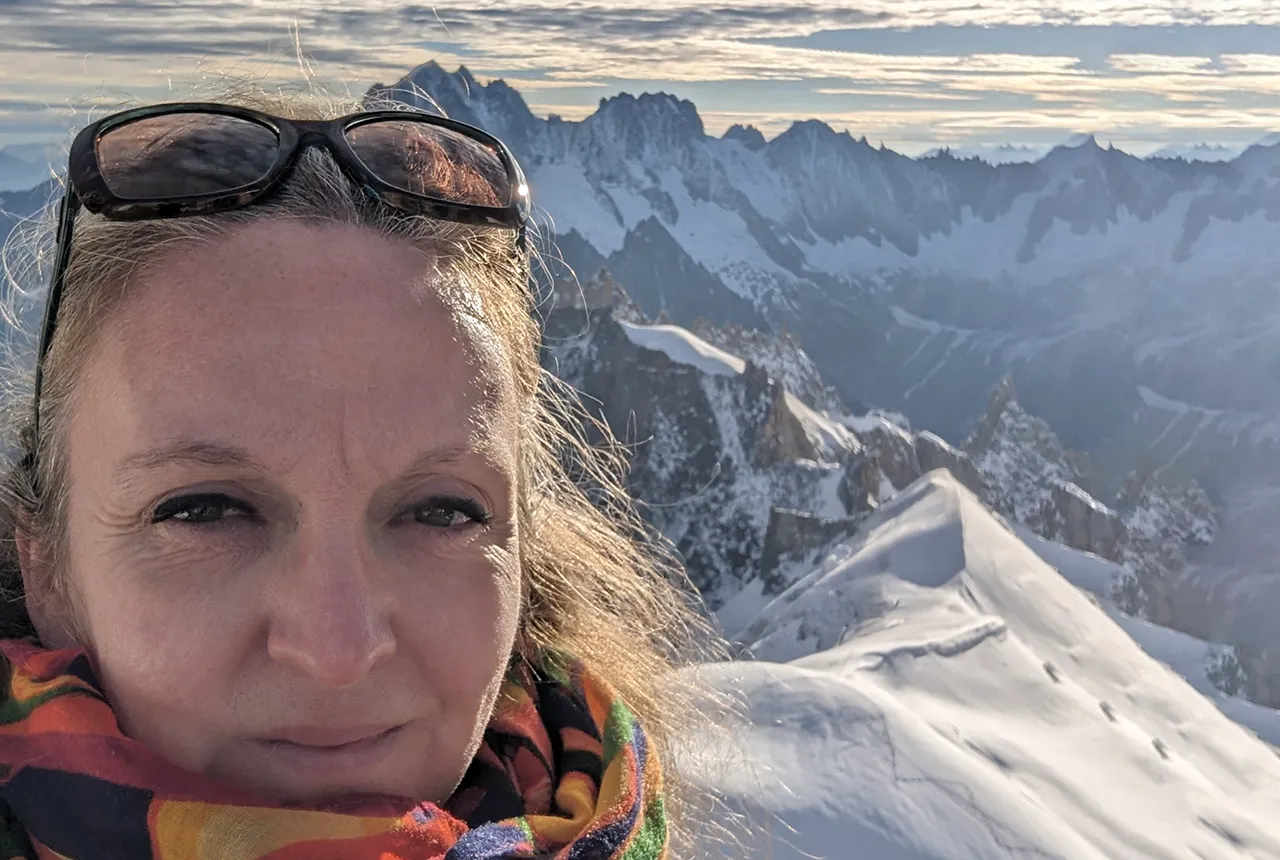
BGS announces new director of its international geoscience programme
17/03/2025
Experienced international development research leader joins the organisation.

Presence of harmful chemicals found in water sources across southern Indian capital, study finds
10/03/2025
Research has revealed the urgent need for improved water quality in Bengaluru and other Indian cities.
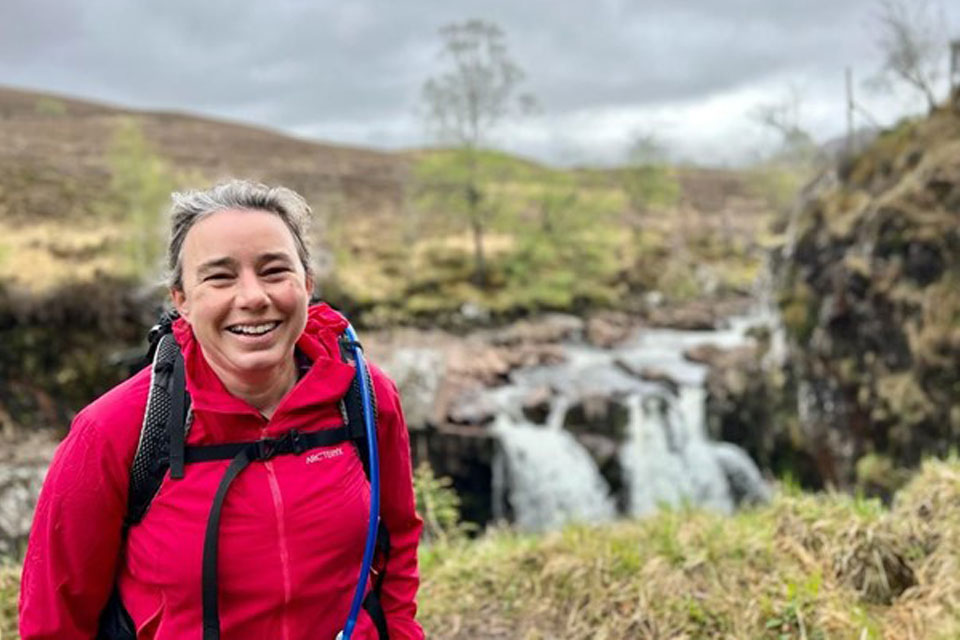
Dr Kathryn Goodenough honoured with prestigious award from The Geological Society
27/02/2025
Dr Kathryn Goodenough has been awarded the Coke Medal, which recognises those who have made a significant contribution to science.
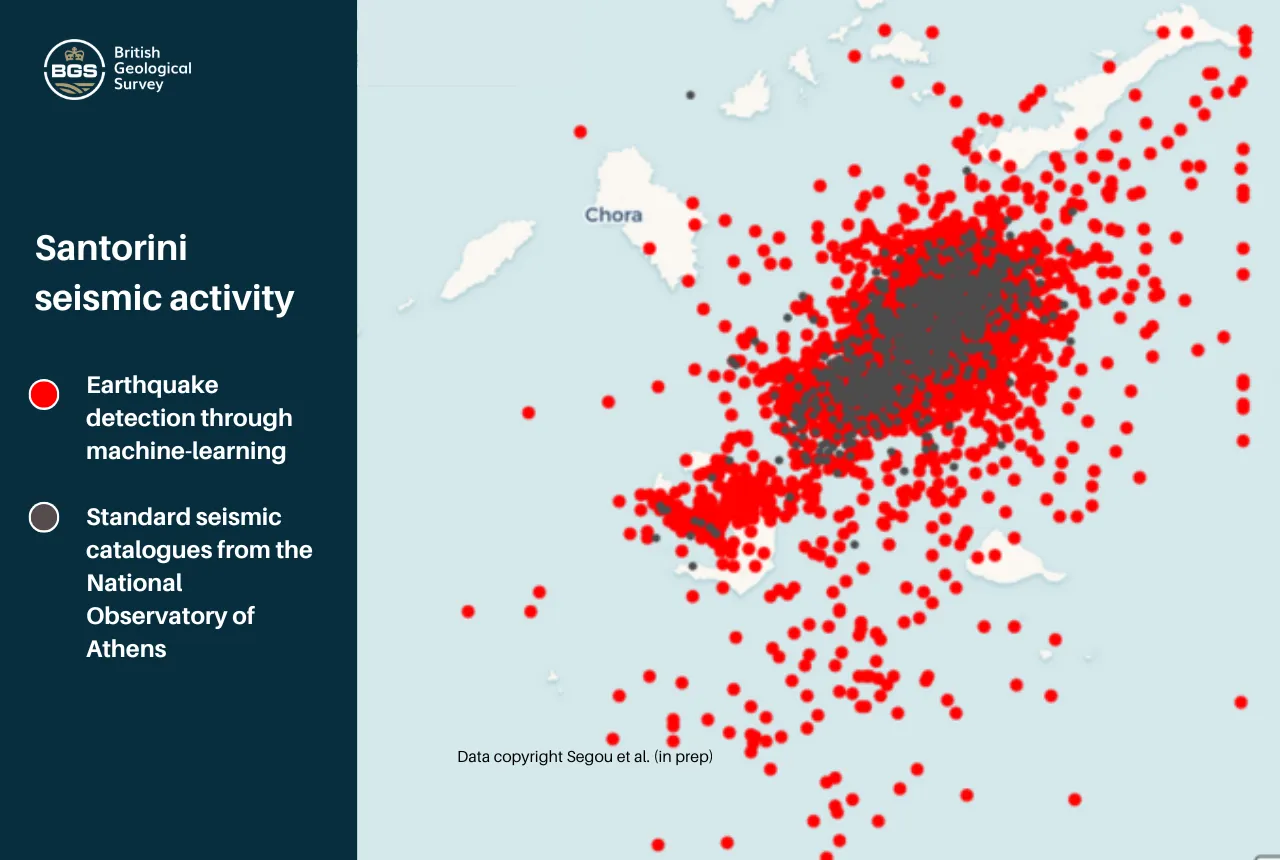
Artificial intelligence is proving a game changer in tracking the Santorini earthquake swarm
07/02/2025
Scientists are harnessing the power of machine learning to help residents and tourists by detecting thousands of seismic events.
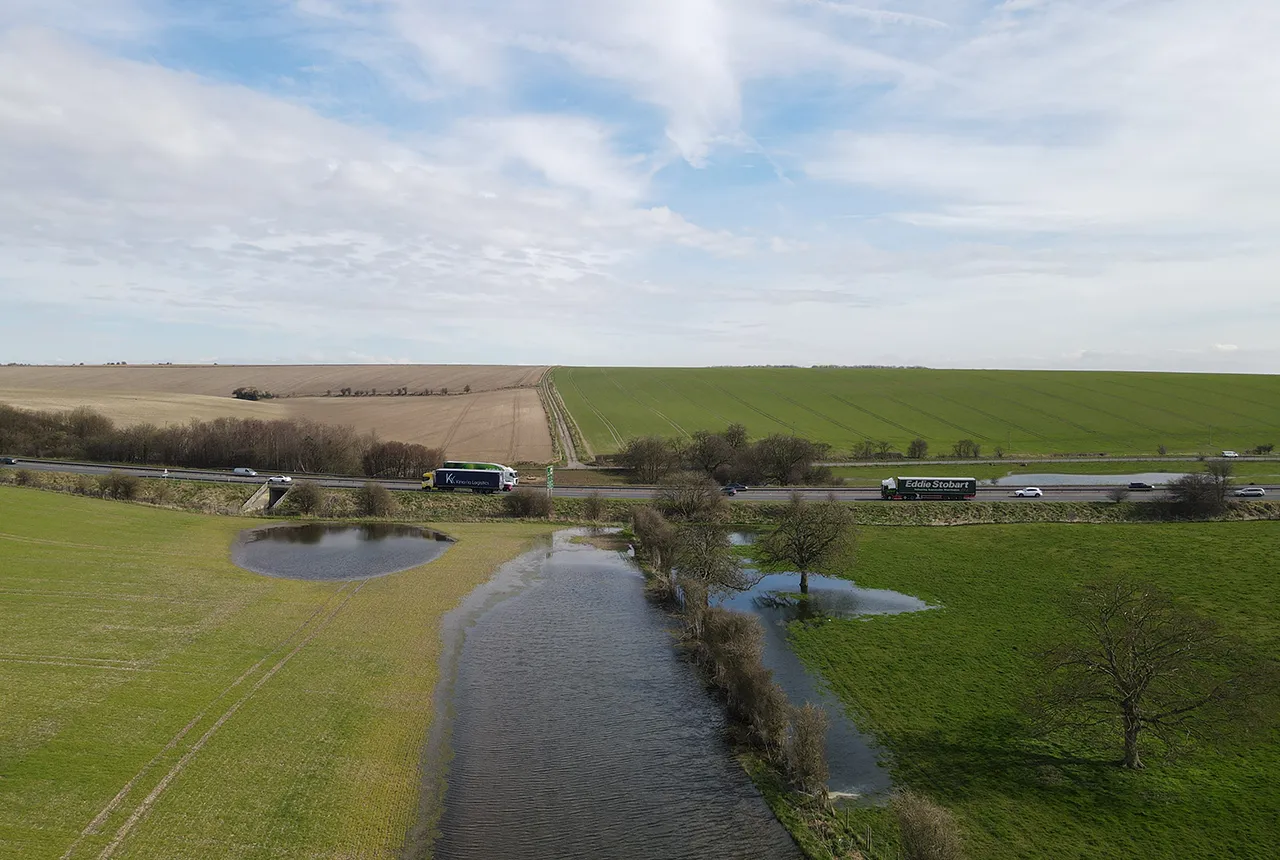
Pioneering tool expanding to analyse agricultural pollution and support water-quality interventions
06/02/2025
An online tool that shows which roads are most likely to cause river pollution is being expanded to incorporate methods to assess pollution from agricultural areas.
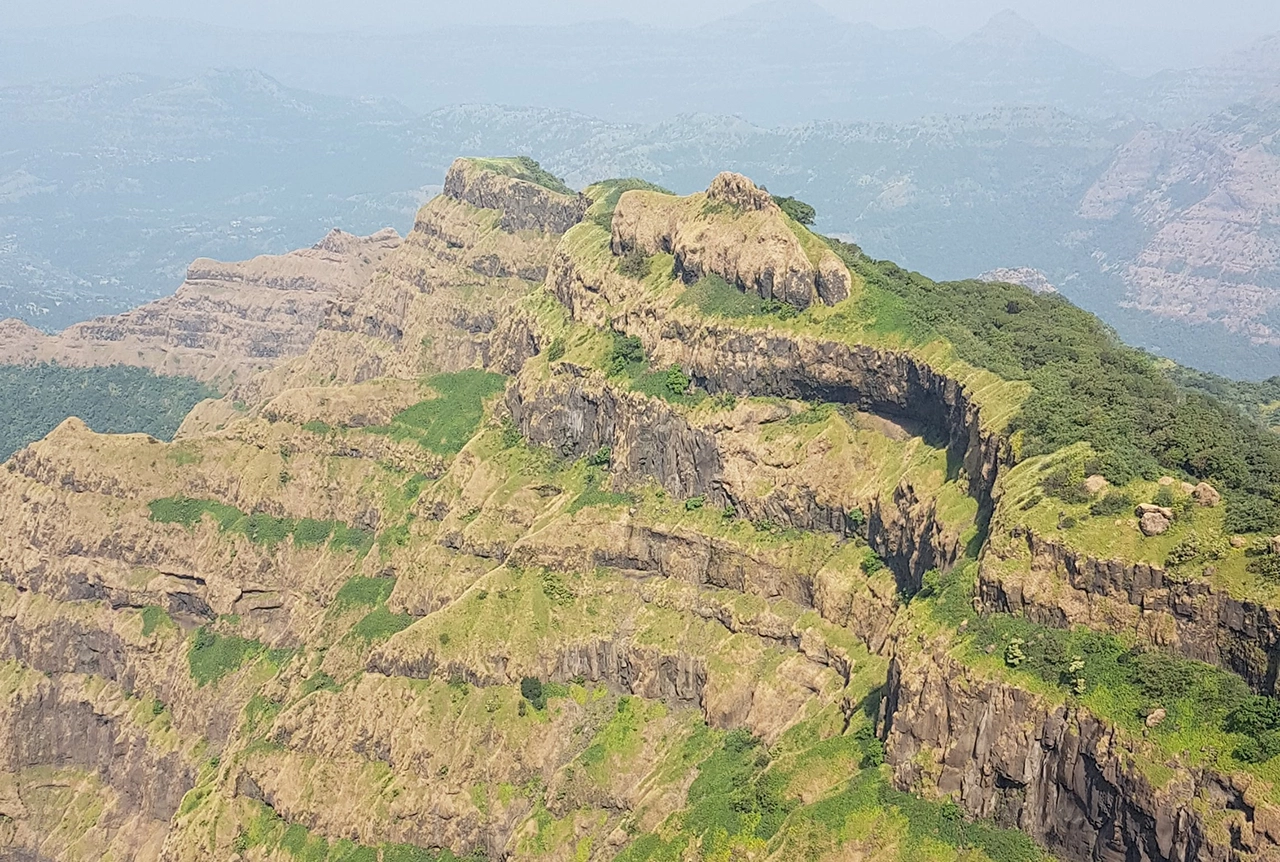
Could underground disposal of carbon dioxide help to reduce India’s emissions?
28/01/2025
BGS geologists have partnered with research institutes in India to explore the potential for carbon capture and storage, with an emphasis on storage.
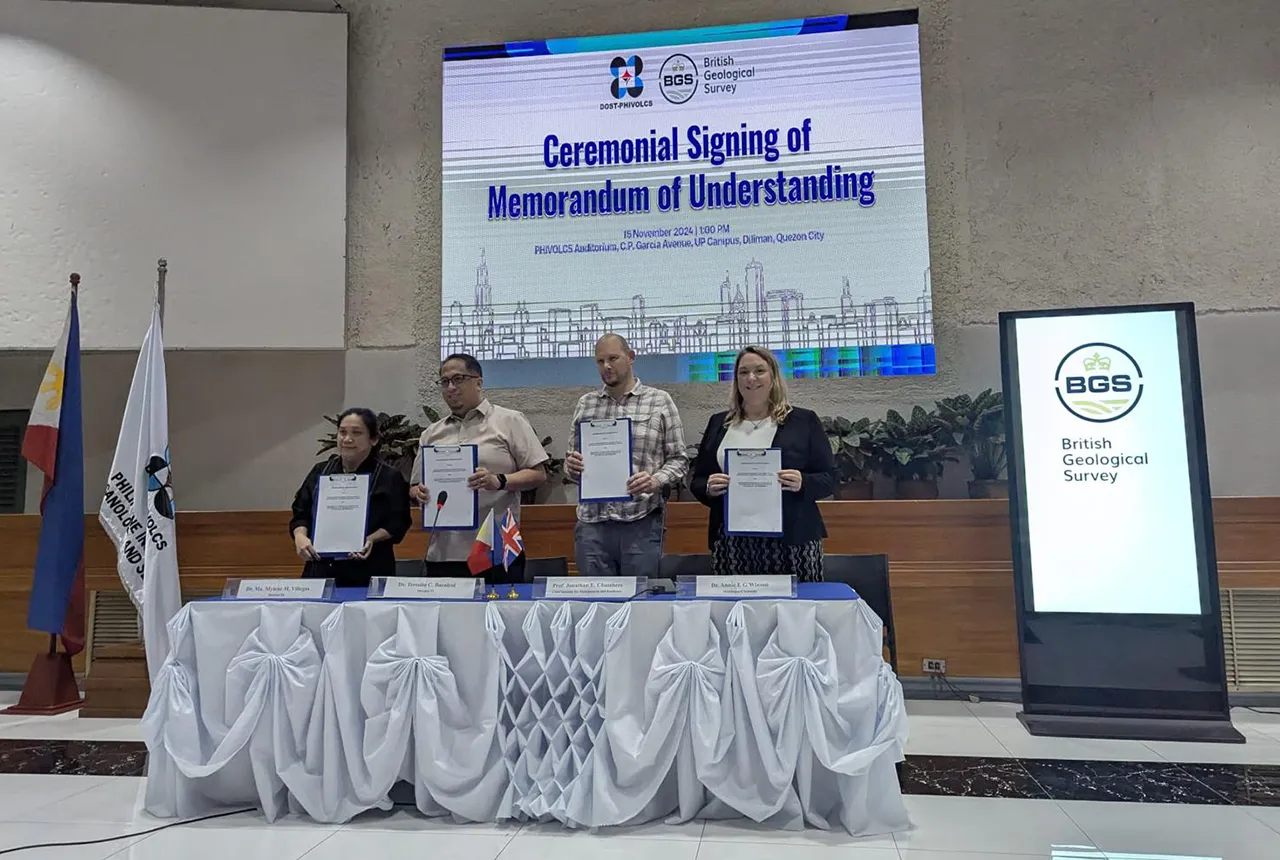
New Memorandum of Understanding paves the way for more collaborative research in the Philippines
21/01/2025
The partnership will focus on research on multi-hazard preparedness within the country.
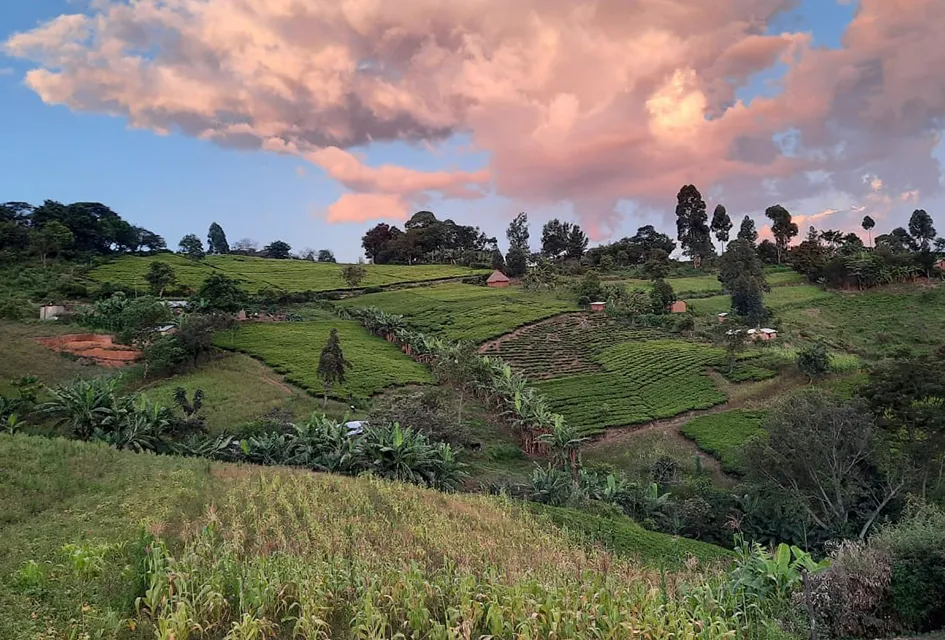
Dynamics of land-to-lake transfers in the Lake Victoria Basin
09/12/2024
In June 2024, a UK/Kenya research team shared research findings from a collaborative, four-year field and experimental programme within Kenya.

Brighid Ó Dochartaigh honoured with prestigious Geological Society award
27/11/2024
A recently retired BGS employee has been honoured for her contribution to the hydrogeological community.
